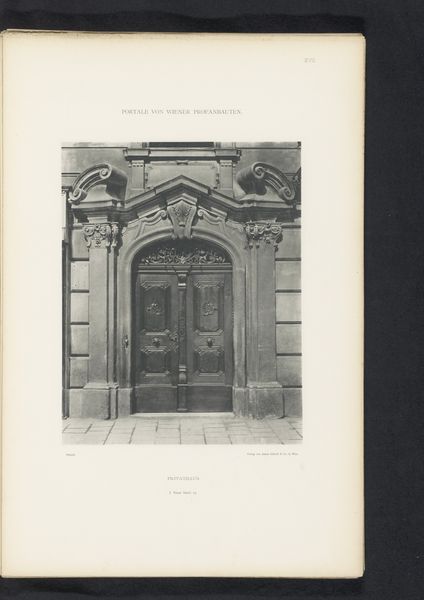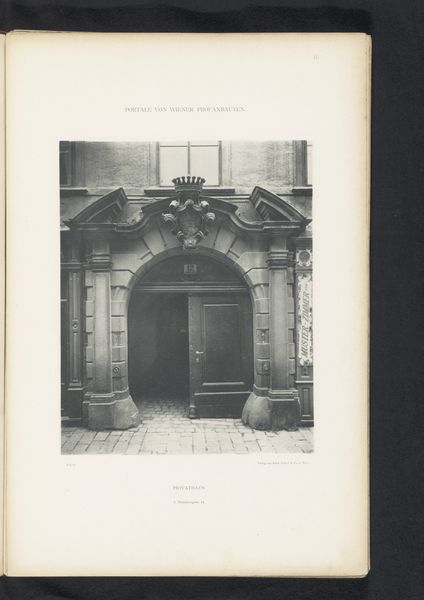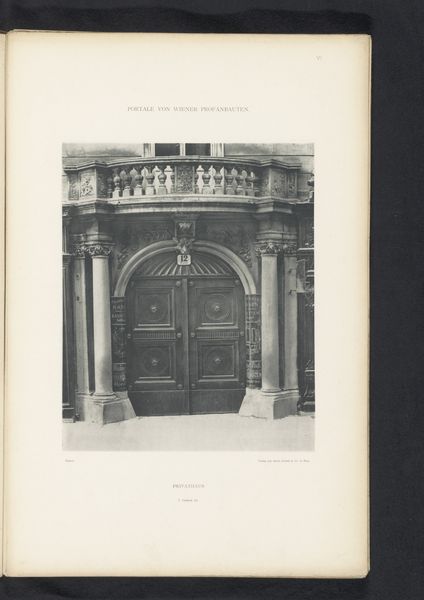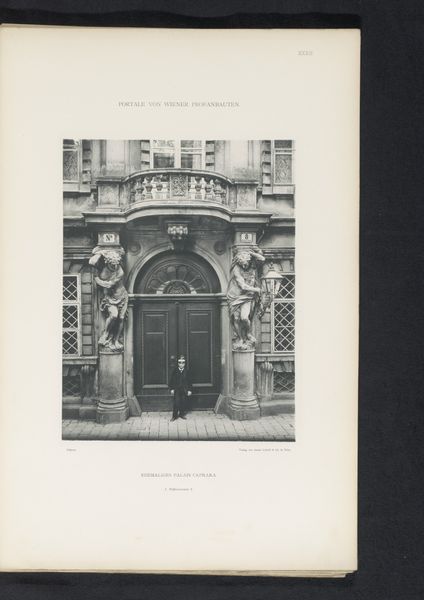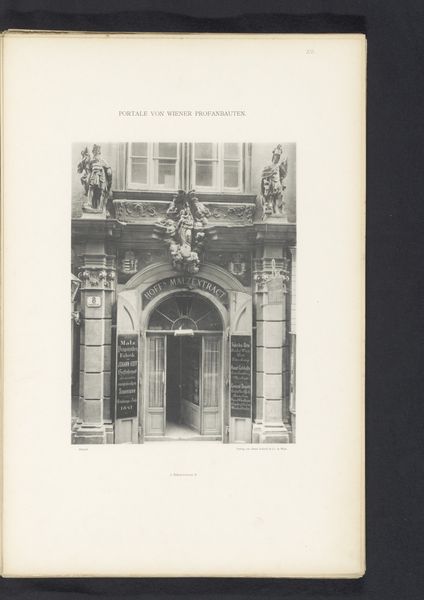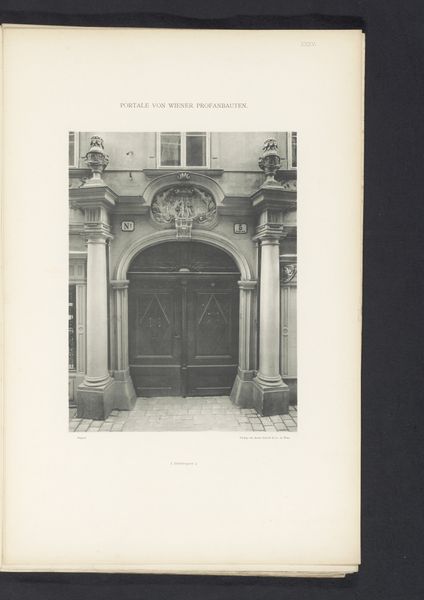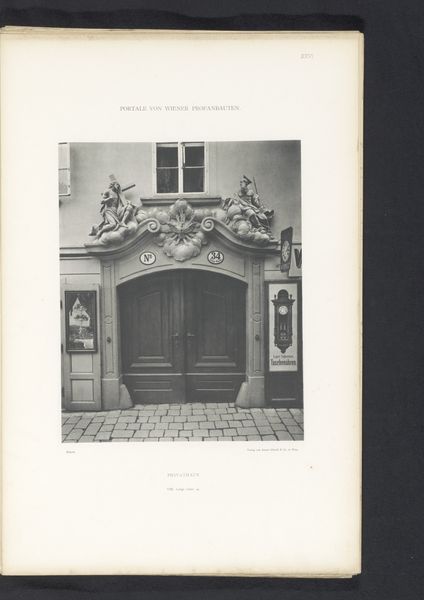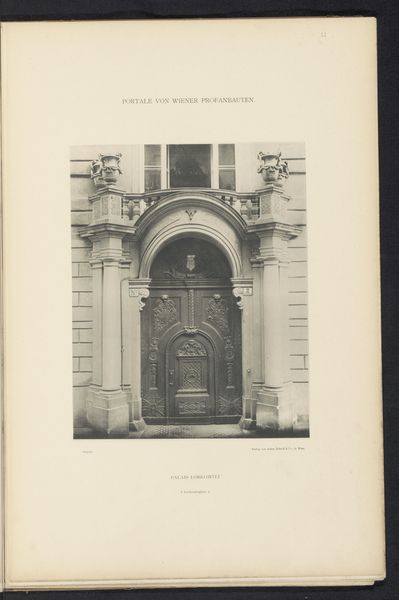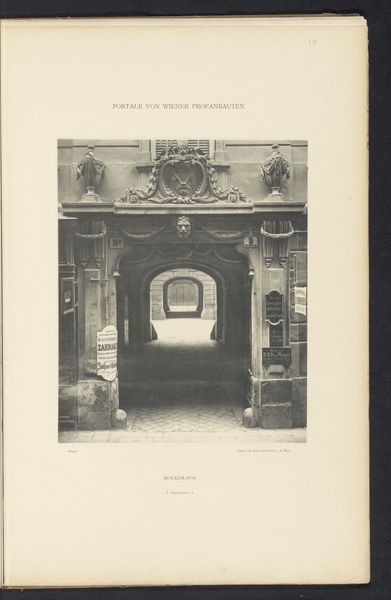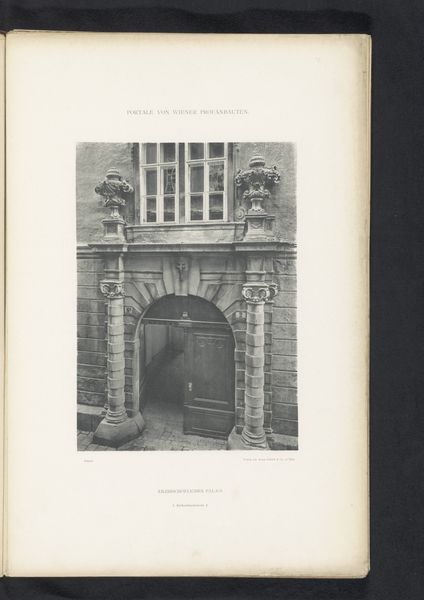
print, photography
#
portrait
# print
#
photography
#
ancient-mediterranean
#
cityscape
#
building
Dimensions: height 261 mm, width 222 mm
Copyright: Rijks Museum: Open Domain
Curator: At first glance, it has a really solemn feel; so balanced and grand but somewhat forlorn. Editor: Precisely. Let's delve into this. We're looking at a photographic print titled "Toegangsportaal van het Michaelerhaus te Wenen," placing it in Vienna before 1894. The image, rendered in black and white, captures the entrance portal of the Michaelerhaus, and knowing photography had become rather ubiquitous, its role in shaping our understanding and memory of architecture really begins to evolve around this time. Curator: I notice that it really captures how civic and domestic spheres were divided, right at this moment when early modern social systems were also being renegotiated. What construction materials were utilized? What labor went into creating these massive thresholds, defining private vs public space? Editor: Absolutely, consider the historical context. Vienna was, at the time, the capital of the Austro-Hungarian Empire. The Michaelerhaus would have been constructed as a grand residence, its architectural details like these projecting cornices and capitals designed to convey the wealth and power of its inhabitants. These weren’t just thresholds, they were carefully constructed symbols, aren't they? How do those architectural elements, the stones, become messages in themselves? Curator: It also reveals an increasing cultural access and desire for replication. Photography makes these elite aesthetics much more visible—creating new material desires. Think of all the hands involved, from quarry to engraver, mason to binder – it wasn't a simple task! What about its place in the market of images, though? Editor: I'd argue this photograph played a key role in visualizing Vienna as a center of power and cultural sophistication for audiences far beyond the city, disseminating architectural styles and aspirations. The mass reproduction aspect is pivotal, enabling it to circulate through different social classes and construct a shared identity, or aspiration, centered on Vienna’s grandeur. Curator: True, but the print also stands as a marker of technological evolution—changing processes and broader markets were all impacting what artists and makers could achieve, even back then. Editor: I see it less as a departure and more as a clever adaption, of architecture broadcast through mass culture. The doorway represents not only a threshold between spaces, but a bridge across time and cultural understandings. Curator: Indeed. It’s about understanding architecture—both physical and photographic—as cultural output, driven by the availability of tools and the mechanics of reproduction.
Comments
No comments
Be the first to comment and join the conversation on the ultimate creative platform.

